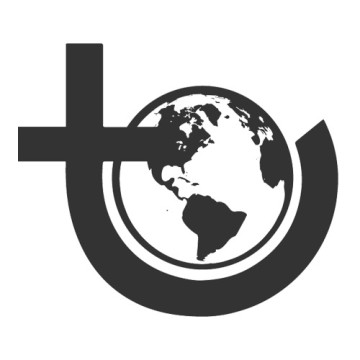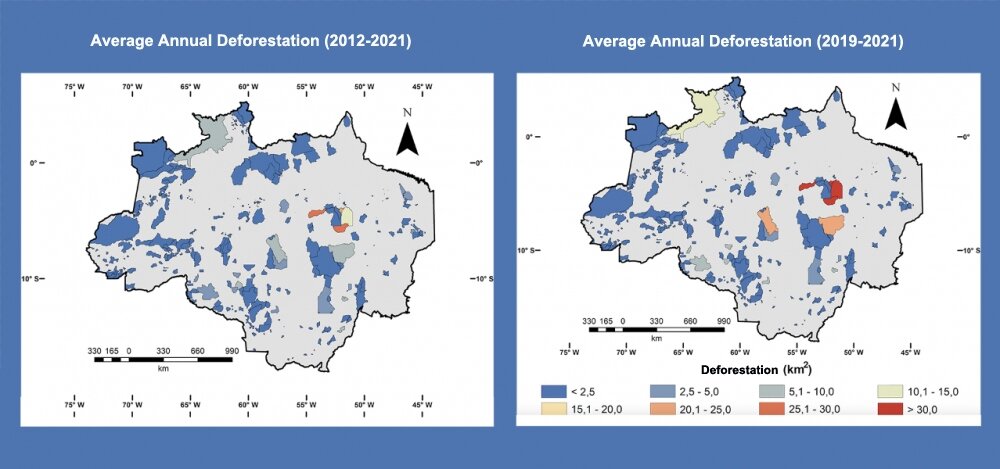11 Dec 2024

Tired Earth
By The Editorial Board

Some of them, such as Apyterewa Indigenous Territory in Pará state, are particularly affected, endangering Brazil's ability to meet the targets to which it is committed internationally in terms of combating deforestation and mitigating the impact of climate change. To protect the areas of the Amazon that are still intact, effective action must be taken to enforce the nation's environmental laws.
This warning is in a letter entitled "Protect the Amazon's Indigenous lands" and published in the journal Science. The letter is signed by Guilherme Augusto Verola Mataveli, a researcher in the Earth Observation and Geoinformatics Division of Brazil's National Space Research Institute (INPE) with a postdoctoral scholarship from FAPESP; and Gabriel de Oliveira, a professor at the University of South Alabama in the United States.
The same issue of the journal, published on January 21, features similar warnings in another letter, entitled "Mining and Brazil's Indigenous peoples," by two scientists affiliated with the National Institute of Amazon Research (INPA), Lucas Ferrante and Philip Fearnside.
"Brazil has good environmental laws that on paper should reduce and inhibit deforestation. However, enforcement of these laws is the big issue. It's the first step, which should be associated with long-term measures, such as promoting environmental education, valorizing the standing forest as a source of income for the communities that live in the Amazon, and resuming and strengthening the actions called for by the PPCDAm. They proved effective in the past," Mataveli told Agência FAPESP.
The Action Plan to Prevent and Control Deforestation in Legal Amazonia (PPCDAm) was launched in 2003 to bring about a continuous reduction in deforestation and create conditions for a transition to a sustainable development model in the area. However, the fourth phase of the plan, which was supposed to have lasted until 2020, was starved of resources and interrupted. During last year's COP26 climate conference in Glasgow, the federal government pledged to reduce illegal deforestation to zero by 2028.
Legal Amazonia is an area of more than 5 million square kilometers comprising the Brazilian states of Acre, Amapá, Amazonas, Maranhão, Mato Grosso, Pará, Rondônia, Roraima, and Tocantins. It was created by Brazilian federal law dating back to 1953 in order to promote special protection and development policies for the area.
In their letter, Mataveli and Oliveira refer to the "dramatic increase" in deforestation rates in Legal Amazonia since 2019. The official rate for the 12 months between August 2020 and July 2021 was the highest for 15 years, reaching 13,235 sq. km., or slightly less than the area of Northern Ireland (14,130 sq. km).
This rate was also 69% higher than the average annual since 2012, according to data from INPE's Amazon Forest Satellite Monitoring Service (PRODES). Internationally recognized as the most accurate tool for estimating annual deforestation rates in the Amazon, PRODES focuses on cut-and-burn rates and has used the same methodology since 1988.
As the letter notes, accelerating destruction of the forest affects conservation areas, including Indigenous lands, which are supposed to act as shields against deforestation. The authors stress that deforestation in Indigenous lands had an annual average of 419 sq. km. in the last three years, corresponding to a rate 80.9% higher than the annual average for the period 2012-21.
Located in the municipality of São Félix do Xingu (Pará), Apyterewa accounted for 20.7% of total deforestation in Indigenous lands in 2021. It had already lost 200 sq. km. of forest between 2016 and 2019, with deforestation rising from 4.7% of the area (362 sq. km.) to 7.4% (570 sq. km.) in the period.
This resulted in an increase in greenhouse gas emissions, especially carbon from burning, as noted by an article published in 2020 in the journal Forests, with Mataveli and Oliveira among its authors.
"When we studied the satellite data, we found that forest conversion is mainly to pasture and cropland, but we located mining sites inside Apyterewa," Mataveli said. "The increase in greenhouse gas emissions didn't continue at the same rate, since deforestation doesn't always involve burning."
Mataveli is part of a Thematic Project linked to the FAPESP Research Program on Global Climate Change (RPGCC). The principal investigator is Luiz Eduardo Oliveira e Cruz de Aragão, also a researcher at INPE.
Legislation
In the letter to Science, the researchers state that "no effective law enforcement actions were taken to stop land grabbers" in Apyterewa, home to the Parakanã, after the alarm was raised in the 2020 article in Forests. The reservation was officially recognized by a federal government decree in 2007, but since then the decree has been challenged in the courts on the grounds that non-Indigenous people were not given a chance to oppose it according to due process of law.
On March 9, 2022, the 2nd Panel of the Federal Supreme Court (STF) unanimously rejected a motion by the mayor of São Félix do Xingu to revoke the decree. In a press release issued in July 2021, the mayor had justified opposition to the decree by noting that between 4,000 and 5,000 non-Indigenous people lived in the area more than a decade before it was demarcated as an Indigenous territory, arguing that they should be allowed to remain.
A study by a different group, in which Mataveli took part alongside Gilberto Câmara, also a researcher at INPE, highlighted the threat posed to Indigenous reservations by land speculation, adverse land-use change involving conversion of primary forest to pasture and cropland, and rising emissions of fine particulate matter from burning. An article on the study, which focused on Ituna/Itatá Indigenous Territory in Altamira, Pará, is published in the journal Land Use Policy.
"The conservation of Indigenous lands is paramount for honoring Brazil's legal commitments, maintaining Amazonian environmental stability, fighting climate change, and guaranteeing traditional peoples' well-being. The existence of laws for preserving the Amazon's remaining forests and the rights of traditional peoples is not sufficient. Effective law enforcement actions are required to protect the last intact frontiers of the Amazon," the authors of the letter to Science conclude.
We asked FUNAI, Brazil's Indigenous affairs agency, to comment on the letter, but had received no reply when the original news story in Portuguese was posted on the Agência FAPESP website (April 6, 2022). Early this year, in a report available from its website, FUNAI announced that it had invested some BRL 34 million in surveillance and inspection of Indigenous lands in 2021, and had hired temporary personnel to operate reservation sanitary checkpoints and border controls.
A report published on March 31 by the World Resources Institute (WRI) and Climate Focus says that "Indigenous peoples and other local communities are the most effective stewards and protectors of forest lands," arguing that Brazil, Colombia, Mexico and Peru will not be able to achieve their commitments to ending forest loss and land degradation as climate change mitigation goals by 2030 unless they protect Indigenous territories. This is because these lands in the four countries are net carbon sinks, with each hectare sequestering an average of 30 metric tons of carbon per hectare every year, or more than twice as much as non-Indigenous lands.
Source : phys.org
Comment